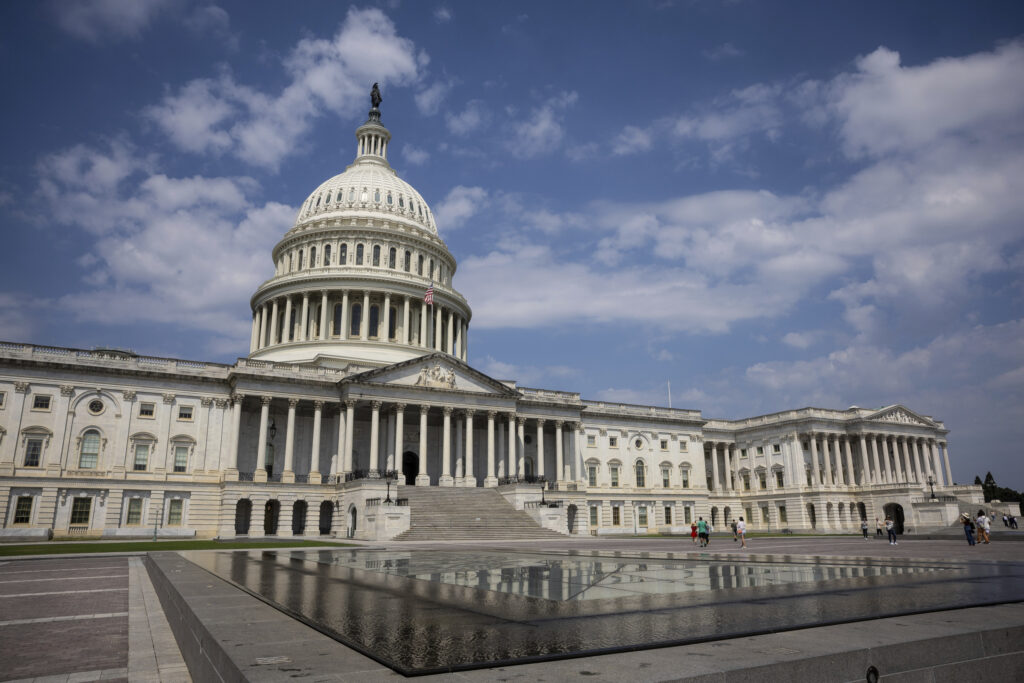More than one-third of Democrats used negative terms to describe their own party, according to a poll published on Sunday.
Newsweek has reached out to the Democratic National Committee (DNC) for comment via email on Sunday.
Why It Matters
Last November marked a pivotal election in the United States, with President Donald Trump returning to the White House after winning both the popular vote and the Electoral College. The scale of the Republican Party’s triumph in November—taking the White House, flipping the Senate, and maintaining control of the House—has sparked soul-searching within the Democratic Party over what went wrong and how to rebuild.
The Democratic Party has struggled with unpopularity and internal dissatisfaction since the sweeping defeat, facing pronounced ideological and generational divides, compounded by widespread voter frustration with congressional leaders and the party’s overall direction.
Democratic leaders have come under criticism from within, some for pushing the party too far left, and others for appearing too conciliatory toward Trump, and a number who have felt disillusioned with its agenda have left the party entirely to either identify as independent or as a Republican.
What To Know
An Associated Press-NORC poll of 1,437 adults found that many Democrats are dissatisfied with their own party. When asked to describe the Democratic Party, respondents frequently offered negative words such as “weak,” “tepid,” “apathetic,” “ineffective” and “broken.”
Overall, 35 percent of Democrats used a negative term to describe their party, whereas 23 percent cited positive terms. Over 40 percent of Republicans cited positive terms related to their party, with 19 percent expressing dissatisfaction.
However, among all the poll’s participants, more people associated negative traits with the GOP, 43 percent, than with the Democratic Party, at 39 percent.
The poll, which was conducted between July 10-14, was published on Sunday and has a margin of error of plus or minus 3.6 percentage points. The makeup of the poll was 35 percent Democrats, 27 percent independents, and 37 percent Republicans.
The poll comes days after the Wall Street Journal published a poll finding that the Democratic Party’s image has deteriorated to its lowest point in over three decades according to the newspaper’s records that date back to 1990. It also comes shortly after July jobs report was released, which showed that the U.S. labor market has slowed over the past few months, with unemployment inching upward and prior job gains revised to be weaker than expected.
What People Are Saying
Democratic National Committee (DNC) chair Ken Martin said on NewsNation’s The Hill Sunday on August 3: “We are a party that needs to focus on getting back to an economic message that gives people a sense that we’re fighting for them, but we don’t need to abandon our values. We’ve been the party fighting for the working class and the poor, but we are also the party that’s always fought against discrimination, bigotry, harassment, and people being bullied out of the conversation. We’ll continue to do that.”
John Anzalone, a Democratic pollster who worked on the Wall Street Journal survey in July, said: “The Democratic brand is so bad that they don’t have the credibility to be a critic of Trump or the Republican Party. Until they reconnect with real voters and working people on who they’re for and what their economic message is, they’re going to have problems.”
Senator Cory Booker, a New Jersey Democrat, said in a speech on the Senate floor Tuesday about advancing a package of bills: “This, to me, is a problem with Democrats in America right now, is we’re willing to be complicit to Donald Trump, to let this pass through when we have all the leverage right now…We are standing at a moment where our president is eviscerating the Constitution of the United States of America, and we’re willing to go along with it today. No. No. Not on my watch.”
What Happens Next?
Democrats are continuing to work out the direction of the party as they prepare for the 2025 gubernatorial elections and the 2026 midterms, when they aim to win back voters who shifted toward Trump last year.
New Jersey and Virginia will hold gubernatorial elections in November as both the incumbent governors are term-limited.
Read the full article here
